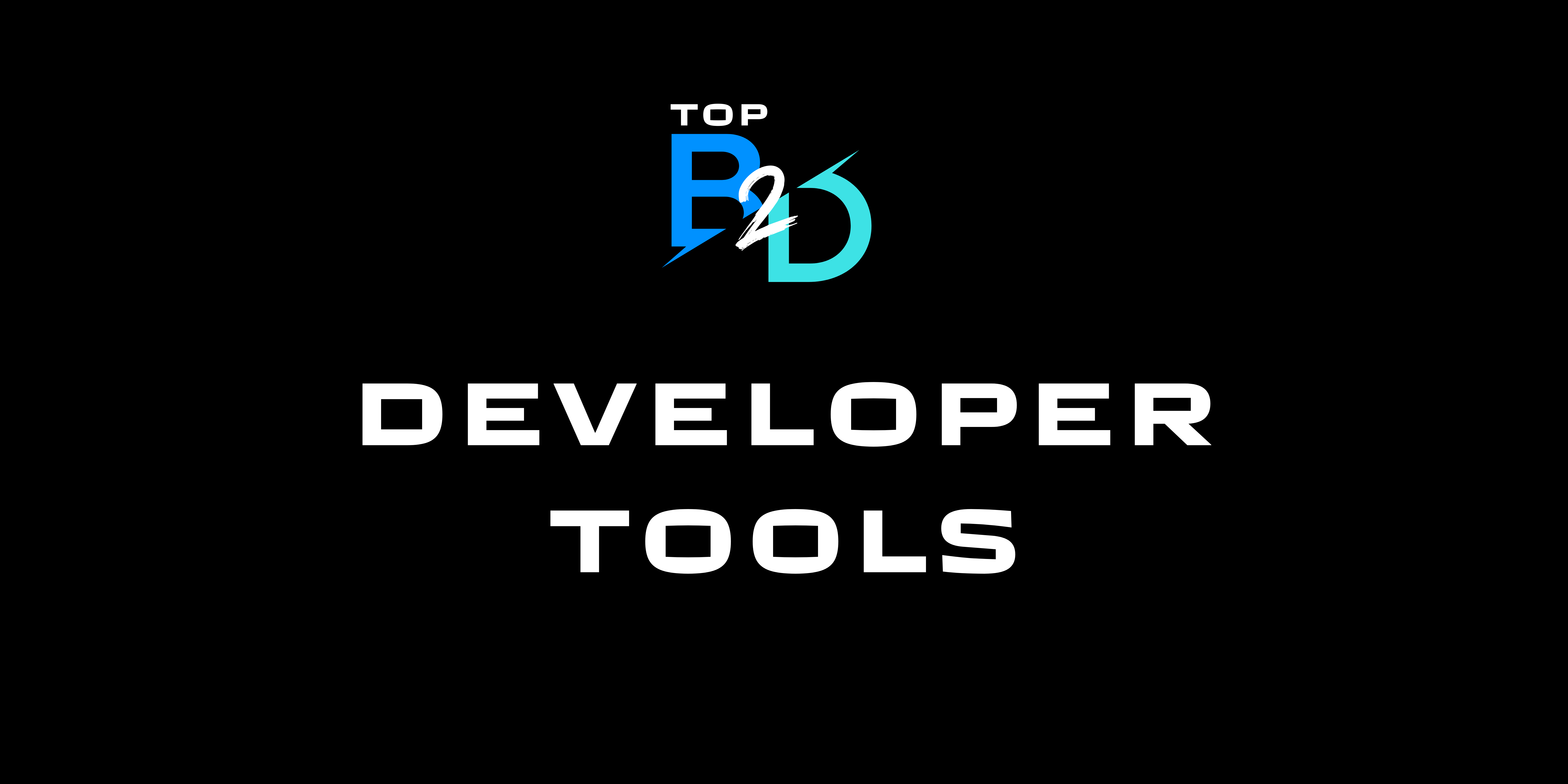Understanding Developer Landing Pages: The Basics
A developer landing page is a specialized web page designed to serve a single and focused purpose. Built to achieve clear conversions, like gaining newsletter subscriptions, promoting a specific product, or getting users to try a service, these pages offer unique benefits to the developer community. Typically, the features of a developer landing page are much more technical and specific than standard landing pages intended for general audiences.
However, it’s vital to understand that the success of any landing page – including those for developers- hinges on its ability to communicate value succinctly and effectively. This is best achieved through a clear understanding of the target user base, paired with a thoughtful layout that emphasizes important aspects such as unique selling points, benefits, and calls to action.
Key Components of Developer Landing Pages:
- Simple, intuitive design: Today’s developers appreciate the clean, functional design. Hence, a clutter-free layout with a strong focus on the service or product on offer is paramount.
- Focused copy: The text Part of a developer landing page should speak directly to coders’ needs and pain points, using jargon sparingly and avoiding superfluous details.
- Highly targeted: Given the technical specificity of developer services, these landing pages should be oriented specifically towards the segment of the developer community that the product or service caters to.
- Engaging call-to-action (CTA): An effective landing page motivates visitors to take the desired action. This could mean signing up for a newsletter, downloading a software trial, or accessing a tool or feature.
Integral to all online marketing efforts is the mastery of search engine optimization (SEO) practices to improve visibility. This is particularly relevant when dealing with niche sectors like the developer community. The landscape of SEO is constantly changing, but certain foundational elements remain the same. Quality content, relevant keywords, and a user-friendly site structure continue to be vital components of an effective SEO strategy.
The Importance of Having A Well-Designed Developer Landing Page
When it comes to online visibility and conversion, the significance of a well-designed developer landing page cannot be overstated. A developer landing page, functioning as an online business card, has the potential to influence visitors’ first impressions, ultimately impacting their decision on whether to engage with your services or not. Therefore, harnessing the power of a well-crafted design to captivate, inform, and convert visitors is vital for any developer aiming to gain a competitive edge in today’s digital ecosystem.
Establishes Professionalism and Credibility
A well-designed developer landing page act as a testament to a developer’s abilities, technical prowess, and attention to detail. From the layout structure, the color scheme, to the seamless navigation, every element of the landing page contributes towards establishing your professional image in the industry. It adds to your credibility, ensuring visitors take notice of your skills and consider you as a potential future partner for their projects.
Enhances User Experience
Optimizing the user experience through a well-designed landing page not only retains visitors but also increases the chances for conversion. Easy navigation, fast load times, and mobile-responsive design make visiting your landing page a pleasant experience for users, which can lead to continued engagement and possibly a conversion. Leverage these design elements along with concise, compelling content for an effective developer landing page.
Improves SEO Performance
A third key benefit of a well-designed developer landing page pertains to SEO performance. Search engines reward sites with responsive design, clean navigation, and a clear information architecture. A developer landing page adhering to these principles can result in improved ranking on search engine result pages (SERPs), driving more organic traffic and potential leads your way.
Key Elements of a Well-Designed Developer Landing Page
Elements of A Successful Developer Landing Page
A successful developer landing page possesses key elements designed to engage users, communicate valuable information, and drive conversions. This main landing spot for developers should be more than just aesthetically pleasing. By combining several crucial features, a developer landing page can attract, retain, and convert visitors efficiently.
Clear and Concise Headlines
In the context of a developer landing page, the initially visible headline can either hook the visitor or drive them away. It’s absolutely crucial to have a well-articulated, clear, and concise headline that immediately conveys the purpose of the page. This headline must crisply tell visitors what they can do or accomplish on the page, avoiding any industry jargon that can become overwhelming for newcomers.
Straightforward Navigation
Making the landing page easily navigable is another essential aspect. A user-friendly interface with intuitive navigation can drastically improve the user experience, reducing bounce rates. It should demonstrate a layout that allows the user to easily find whatever they are looking for, be it detailed product information, a contact form, or specific developer resources. Simple and straightforward navigation fosters a positive user experience that can increase user engagement and, subsequently, conversion rates.
Relevant and High-Quality Content
Equally important is the content on the landing page. It has to be relevant, high-quality, and informative. The content should be composed in a way that provides precise answers to what the developers are looking for. Providing valuable resources, relevant tutorials, and well-documented APIs can encourage developers to spend more time on the page. The content needs to be refreshed and updated regularly to ensure it stays relevant and provides value to the visitors.
Optimizing Your Developer Landing Page
Why Your Developer Landing Page is Not Converting: Common Mistakes
Creating an impactful developer landing page that leads to higher conversion rates is not an easy task. Developers are meticulous individuals who pay careful attention to all the details, and hence, even minor mistakes can significantly affect your landing page’s conversion rate.
The most common mistake is the lack of clarity and precision in your message. Developers are busy professionals who do not have time to sift through fluff and unnecessary details. The information presented to them should be specific, accurate and to-the-point. Employ clear subheadings, bullet points, or numbered lists to present key features or benefits.
Call to Action (CTA) Missteps
Another common mistake is a weak or confusing Call to Action (CTA). A CTA is what guides your page visitor on what to do next. If it’s not compelling or it’s lacking entirely, your conversion rate will suffer. CTAs should be prominent and unambiguous.
Another frequent error can be a cluttered landing page, leading to distraction and confusion. Simplicity and minimalist design with white space are key elements to a successful developer landing page.
The Importance of Testimonials and Portfolio
Often, the significance of testimonials and portfolios is understated. These elements help to build trust and credibility for your brand. Visitors need reassurance about the quality of your work, and the absence of these trust signals can result in lower conversion rates.
The next step is to identify these mistakes and rectify them to build a more effective developer landing page. Be sure to keep an eye on your analytics to adjust and improve continuously.
Optimize Your Developer Landing Page for Better SEO
When it comes to optimizing your developer landing page, it all revolves around creating a user-friendly website that offers relevant and high-quality content. One of the key components to look into is the structure of your HTML code. A well-structured code makes it easier for search engine bots to crawl and index your website, therefore helping to improve your visibility on search engine results pages (SERPs).
Utilize HTML Tags Wisely
HTML tags play a crucial role in SEO. Tags such as the title, header (H1, H2, H3, etc.), and meta descriptions need to be used correctly and optimally. These tags help search engines understand the content of your website and rank your site accordingly. For instance, H1 tags are typically for the main page title, whereas H2 and H3 tags are used for subheadings. Remember, the effective use of these tags can significantly help boost your SEO.
Improve Your Website’s Loading Speed
Another factor that significantly impacts your SEO ranking is your website’s loading speed. With an improved loading speed, you can enhance the user experience, thereby decreasing the bounce rate and increasing the average time spent on the site. One way to optimize your loading speed is by minimizing your HTML code. This could mean removing unnecessary spaces, line breaks, and indentation. Websites that load faster have a better chance of ranking high in search engine results.
Mobile Optimization for Your Developer Landing Page
Your developer landing page’s mobile optimization is another critical aspect you should focus on for better SEO…
Examples of High-Converting Developer Landing Pages
Developer landing pages are crucial for converting prospects into leads, users, or customers. High-converting pages are not just aesthetically pleasing but are also equipped with compelling content and a clear call-to-action. Understanding the elements that make a landing page effective is crucial to attracting and retaining developer clients.
A stellar example of a high-converting developer landing page is GitHub. GitHub’s landing page effectively uses concise and valuable content to capture the attention of potential clients. Employing a clear call-to-action, the page leads website visitors effortlessly towards conversion. It also makes good use of testimonials for social proof, which builds credibility and trust among its audience.
Effective Components of High-converting Landing Pages
Another major contender in the realm of effective developer landing pages is CodePen. A simple yet visually appealing design, coupled with clear headlines and sub-headlines, sets this landing page apart. It clearly illustrates the benefits of using their services to the potential client.
StackOverflow also stands out among developer landing pages, not only because of its popularity but the impactful way it uses SEO to draw traffic. The landing page focuses on the value it provides to the developers, showcasing quite cleverly different tools and resources which are easily accessible to the users. Such effective content and design strategy allow these pages to optimize their conversion rates.
Understanding What Works: An Analysis
Tips To Improve Your Developer Landing Page
A well-optimized developer landing page could spell the difference between attracting clients or repelling them. Thus, improving your landing page should be atop your priorities as a developer. Let’s dive into some professional tips to upgrade your developer landing page.
When it comes to a developer landing page, the design acts as the initial point of contact. Your landing page’s design is just as important as the services you offer. A clean, easy-to-navigate landing page gives off an immediate impression of professionalism. Keep the colors consistent and make use of whitespace to make it easier on the eyes for your corner of the internet.
Content and SEO
Content is the heart of any page. Concisely demonstrate your skills and experiences and how you can utilize them for potential clients. Remember to integrate Search Engine Optimization (SEO) techniques to increase your visibility on search engine results. SEO isn’t just about keywords – consider using meta-descriptions, alt tags, and optimize your load times as well. Content with SEO strategies generally ranks higher, optimizing your discoverability.
Mobile Responsiveness
With more users accessing the internet via mobile devices, making your developer landing page mobile responsive can’t be stressed enough. A landing page that doesn’t adapt to mobile screens can lead to a poor user experience, causing visitors to bounce off your page. Hence, ensuring mobile responsiveness is a significant step towards improving your developer landing page.
How A/B Testing Can Improve Your Developer Landing Page
Effective optimization is a crucial component to success when creating a developer landing page. Such optimization can be achieved through A/B testing, an evaluation method that compares two versions of a page to see which performs better. This method is a powerful tool that can significantly enhance your landing page’s overall performance.
One of the main advantages of A/B testing is its capability to generate concrete data to guide your optimization efforts. By creating two versions of your landing page – version A and version B – and testing them both with real users, you can gain direct insight into which features resonate best with your users. Such a data-driven approach eliminates guesswork and allows for informed decisions, thereby increasing the effectiveness of the developer landing page.
Specific Areas to A/B Test
When carrying out A/B testing, it is crucial to focus on specific elements of your page that can impact user behavior. This might include the headline, page layout, call to action, visuals, and body text among other aspects. For instance, you might want to test different versions of a call-to-action button to see which garners more clicks.
Furthermore, A/B testing can help improve user interface and overall user experience. Different users may prefer different color themes, button designs, or even navigation methods. Thus, A/B testing can help you better understand these preferences and implement them into your developer landing page. Ultimately, A/B testing can make your landing page more user-friendly, capture visitor’s attention and encourage them to take the desired action.
How to Implement A/B Testing: Best Practices
Utilizing User Feedback to Improve Your Developer Landing Page
When it comes to optimizing a developer landing page, one of the most important tools at your disposal is user feedback. User feedback offers valuable insights into the strengths and weaknesses of your landing page, highlighting areas that are working well and others that may require improvement. Understanding and acting upon these feedback can significantly enhance the user experience, leading to higher rates of visitor retention and conversion.
Importance of User Feedback
Acquiring user feedback is more than just a good practice; it is crucial for the success of your landing page. User feedback helps you to understand the needs and preferences of your audience which, in turn, allows you to tailor your landing page accordingly. This can result in improved user satisfaction, increased interaction rates, and higher conversion rates. Named user feedback, user-reported concerns, and suggestions can also help you uncover any hidden issues or potential enhancements that may have not been previously observed.
How to Utilize User Feedback
Once you’ve gathered user feedback, the next step is to utilize this information to make informed changes to your landing page. This could involve tweaking the site’s layout, rephrasing your calls-to-action, or improving your content based on user preferences. It’s also vital to respond to user feedback in a timely fashion, as this sends a message to your users that their input is valued and impacts your decision-making processes.
- Survey Analysis: Surveys are a popular method to get user feedback. Analyzing survey data can reveal patterns and trends that can drive design enhancements.
- User Testing: This involves observing users while they interact with your landing page. This can provide a deeper understanding of user behavior, helping you make more nuanced improvements.
Gathering and Implementing User Feedback: A Comprehensive Approach
The Future Trends of Developer Landing Pages
The landscape of the web development industry is ever-evolving. This is no different when it comes to developer landing pages. The future trends we expect to see are focusing primarily on enhancing user experience and boosting performance by utilizing innovative technologies.
User-centric layout is one of the critical trends that is at the core of web development. Developer landing pages will surrender to designs that prioritize the user, aligning the layout with the way users prefer to consume content. Such a move is expected to assess and potentially minimize user confusion effectively.
Minimalism, Speed, and Performance
Another trend is the shift towards minimalistic landing pages. Developers are learning that less can indeed be more. This involves reducing the amount of text, utilizing whitespace, and focusing on one primary call-to-action. The move towards minimalism not only creates a pleasing aesthetic appeal but also contributes to speed and performance. With page load speed being a critical factor that affects bounce rate, a minimalistic design should help improve load speed and thus user engagement.
On top of that, the future of developer landing pages is also leaning towards responsive design. This is because the use of various devices to browse the internet has grown exponentially. Therefore, it’s essential to make landing pages as flexible as possible to adjust to any screen size and orientation. In the span of next few years, we can expect more high-performing landing pages that work seamlessly across multiple mediums.






